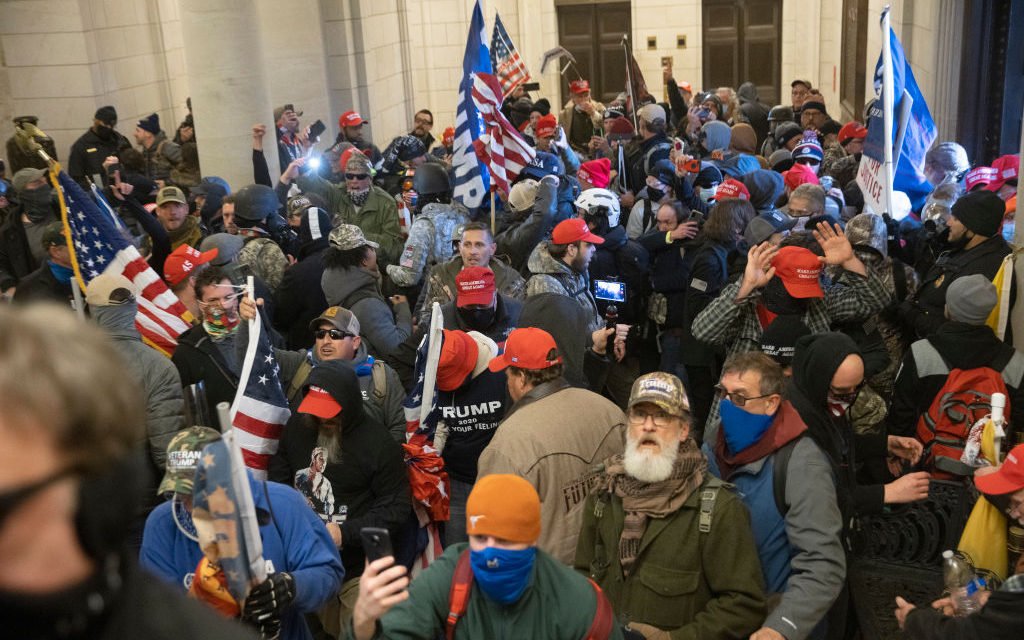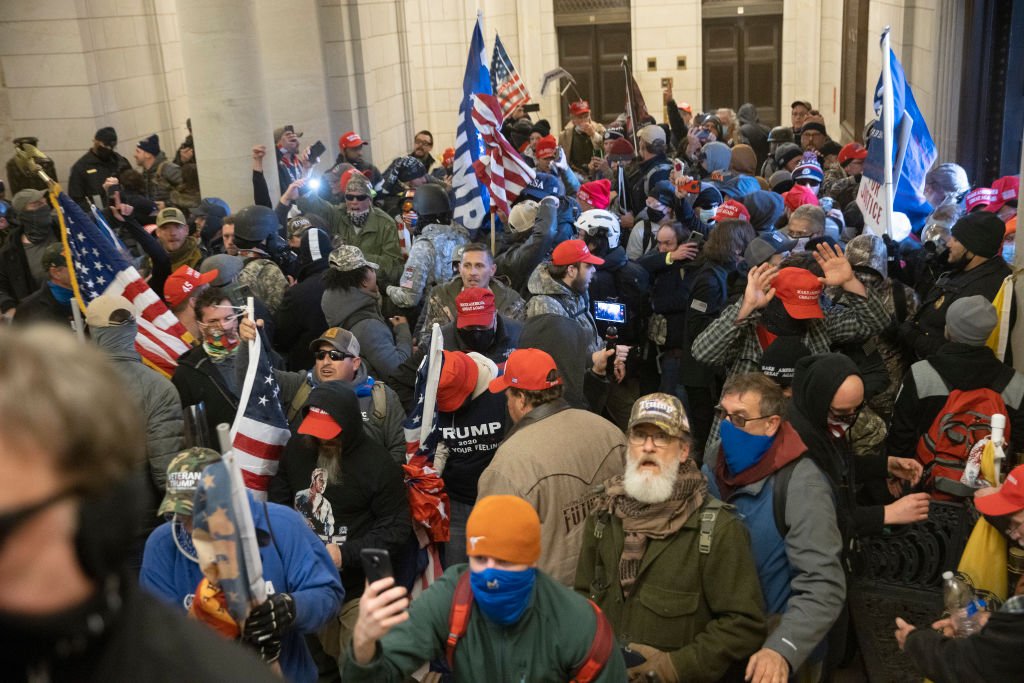After all of the “we’re shocked” and “how could this happen,” lawmakers and corporate leaders are now distancing themselves from Donald Trump in the aftermath of the well-planned violent takeover of the Capitol last week by avowed white nationalists, some of whom are members of Congress. I too watched in shock and disbelief, and I am now even more concerned about the safety of the millions of BIPOC (Black, Indigenous, People of Color), Jewish people, LGBTQ communities and other marginalized groups who every day live with white supremacy and its deleterious impact. Who will keep us safe? Organizational leaders should be turning their attention to ensuring that BIPOC employees are safe and to ensuring that they are not employing avowed white nationalists.
Organizational leaders should be turning their attention to ensuring that BIPOC employees are safe and to ensuring that they are not employing avowed white nationalists. Share on XThe white nationalist groups who desecrated the Capitol have been emboldened by Donald Trump who personally terrorized BIPOC and other marginalized groups for his entire time in office. Of course, this kind of violence against BIPOC and other oppressed groups is not new. It is our history. It is who we are. There are hundreds of examples of violence against Black people over the centuries, along with centuries of lies to cover up the atrocities. It is easy to forget the history of white supremacy in this country, especially since it has not been told accurately or not told at all.
The media repeatedly reported that this was the first time the Capitol was stormed since the War of 1812, but let us not forget that white supremacists perpetuated racial violence against Black people to keep them from holding political office and lied about it. One poignant example is the Colfax Massacre in Louisiana during Reconstruction in 1873 where 60-80 Black people were killed by the Ku Klux Klan refusing to accept the election of Black legislators. The Wilmington, North Carolina Coup took place in 1898 when 60 Black people were murdered in a takeover of the government by white supremacists. The history books blamed Black people as the instigators. It took over a century for the truth to be told.
Last week, Congress experienced an attempted takeover firsthand — what it is like to fear for your life and to be traumatized by the manifestation of hate and racism. The rest of the world, many perhaps for the first time, could see the double standard and contrast of how Black Lives Matter Movement protestors were treated by law enforcement last summer and the leniency afforded to the insurrectionists. It is obvious that it was an organized inside job with help from police officers and Republican Caucus members.
The rest of the world could see the double standard and contrast of how Black Lives Matter Movement protestors were treated by law enforcement last summer and the leniency afforded to the insurrectionists. Share on XIs it clear now why BIPOC are afraid of law enforcement? Is it clear now that there is an intent by some of those who are hired to protect and serve to kill innocent Black people? Is it clear now that avowed white supremacists are on the inside of every one of our hallowed institutions?
Is it clear now why BIPOC are afraid of law enforcement? Is it clear now that there is an intent by some of those who are hired to protect and serve to kill innocent Black people? Share on XA poll taken last week reported that 74% of Americans think that the attack on the Capitol was wrong, 18% said that they approved of it and 8% were unsure.
The workforce is a microcosm of society, so it is safe to say that at least 20% of the workforce is likely to hold overt white supremacist ideologies. Previously closeted white supremacists are more apt to feel that they can be vocal with their views and even that they can do harm to BIPOC without consequences. After all, the Capitol insurrectionists were allowed to leave without being apprehended by law enforcement after they had literally trashed the building and threatened congressional leaders.
The workforce is a microcosm of society, so it is safe to say that at least 20% of the workforce is likely to hold overt white supremacist ideologies. Share on XHarm against BIPOC in the workplace is in the form of microaggressions, sabotage, denial of promotions, wrongful terminations or even physical violence. In our work at The Winters Group, we have witnessed all of the above. As a DEIJ practitioner I have been guilty of saying: “We are not trying to change your values or beliefs.” I will no longer say that because if your values and beliefs uphold white supremacy views, then indeed our mission is to denounce these ideologies as wrong and dangerous.
As a DEIJ practitioner I have been guilty of saying: 'We are not trying to change your values or beliefs.' I will no longer say that because if your values and beliefs uphold white supremacy views, then indeed our mission is to… Share on XThe principles of inclusion and equity are not neutral. Organizations that espouse the values of diversity, equity and inclusion should do more to understand what white supremacy is and how it is engrained in your culture. BIPOC are living in more fear today than ever before. Black Fatigue is ever more present.
Here are some suggestions for leaders to mitigate white supremacy and the imminent threats because even though Donald Trump may go away, Trumpism and his more than 70 million followers remain, and some of them are your co-workers, maybe even your boss.
Even though Donald Trump may go away, Trumpism and his more than 70 million followers remain and some of them are your co-workers, maybe even your boss. Share on X- Ensure that all employees are physically and psychologically safe. Understand the specific threats that white supremacists pose to your BIPOC employees. Engage counselors and therapists who understand racial trauma.
- Develop applicant screening processes that include rejecting candidates who espouse racist views. It is one thing to fire people after their behavior violates your fairness and justice values, it is another to be intentional about not hiring them in the first place. After the fact, the harm has already been done to the victim(s). Many organizations have zero tolerance policies for racist behaviors. Assess these policies for their effectiveness.
- Make it clear that inclusion and equity are not neutral concepts. Be specific about what you stand for and what you stand against. Develop learning experiences that tell the raw and painful truth about racism in America while be mindful how traumatizing reliving some of these events and facts can be for BIPOC. Do not expect your BIPOC employees to be the “teachers.”
- Acknowledge that this is about politics. Most everything is about politics. Many companies have long-standing policies of non-partisanship and staying silent on key issues. However, we know that corporations have privately always been key contributors to political campaigns. Over the last year, since George Floyd’s murder and in the last week since the storming of the Capitol, major companies have taken a stand. Numerous Fortune 500 companies are suspending political donations.
- Interrogate all of your external partnerships and relationships and sever ties with individuals and organizations connected to white supremacy. You might be surprised at how insidious it is.
Likewise, I recognize that Black people, in particular, are experiencing the impact and trauma of racism and white supremacy in unique ways. I offer a reminder that these moments call for us to prioritize self and communal care. We do not owe white people or white institutions anything as we process these events.




















